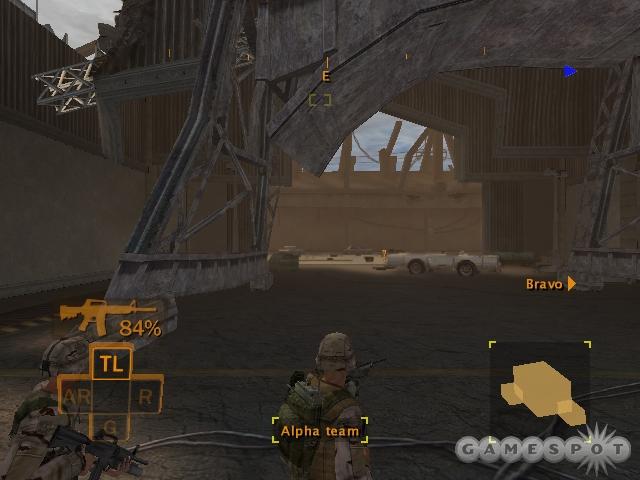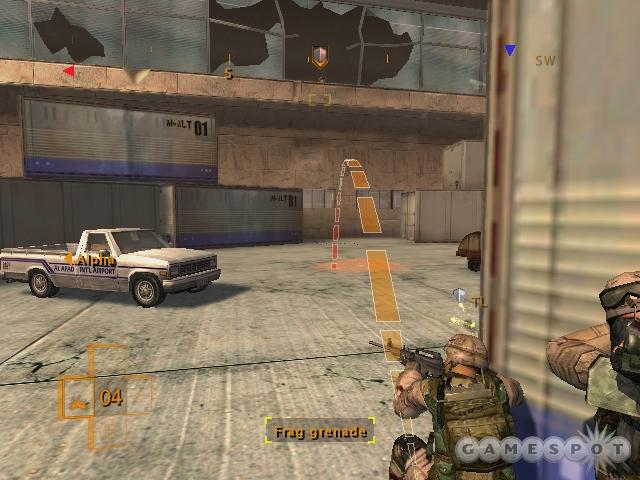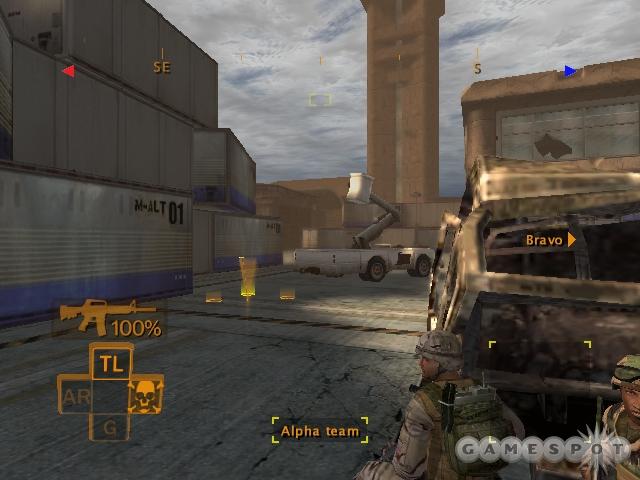Full Spectrum Warrior Hands-On Impressions
We get hands on with the Xbox version of Pandemic's military real-time tactical combat game.
By now, most fans of military-themed games have heard of Full Spectrum Warrior, which was first unveiled at last year's E3 show. The game was originally developed at Pandemic, under the direction of the United States Army, which was looking for a game it could distribute freely to its soldiers to play in their free time. The Army discovered that video games were a popular pastime among its troops, so creating a video game that could help them sharpen their tactical decision making in combat became a priority. THQ eventually picked up the project for commercial distribution, and aside from a few tweaks to the gameplay, the commercial product is largely similar to the one used by the US military today. THQ will once again exhibit Full Spectrum Warrior at this year's E3, but we had an opportunity to play a near-finished build of the Xbox version of the game prior to the show.

Superficially, the game bears some similarity to Freedom Fighters, in that you have control of a small squad of light infantry soldiers. However, you'll never have direct control of any particular man, so don't expect to aim and fire any weapons yourself. Instead, you'll command two four-man fire teams (alpha and bravo) in much the same way a lieutenant would. The game is played from a third-person perspective, with the camera centered just behind the sergeant in command of the fire team.
Each four-man group is identical to the other. You have one team leader, armed with an M4 carbine rifle, who relays your commands to the other fire team members. An automatic rifleman carries an M249 machine gun, useful for laying down suppressive fire. The third team member is a grenadier, carrying a rifle with an underslung M203 grenade launcher. The final member carries a regular M4, just like the sergeants.
To switch control between the two groups, you just press a button and the camera immediately snaps over to the perspective of the other sergeant. While you do have limited zoom capability, you can swing the camera around and adjust the angle slightly, but mostly you can only see what your fire team is able to see. If you want to peek around the corner, you're required to move your men up to a corner and have the team leader peek around. If you're still confused about where to go, you can bring up a GPS map that shows you your current position, nearby buildings, and the next objective. The game also offers an intelligent movement interface that automatically stacks your men in a line at corners and behind cover when you move the cursor near a car or some rubble. Your soldiers won't accidentally put themselves in harm's way. A handy shield interface pops up over your soldiers' heads when they're in combat to indicate when they're protected by defilade. You'll see the same shield icon over the top of protected enemies' heads as well.

While you won't be pulling any triggers directly, you can order your men to fire in a general direction. The command interface for firing is simple to use, but allows for numerous options. The standard option is "point-fire" which means your soldiers will try to aim carefully at any targets they see in the direction you specify. You can also order your troops to lay down a suppressive fire, which is more effective at keeping entrenched enemies from shooting back; however, this drains your ammunition quickly (represented by a percentage on the left side of the screen). Suppression fire is useful to allow your other fire team to maneuver and flank though zones where they'd normally be vulnerable to enemies. You can, however, sustain friendly fire casualties if you foolishly maneuver a team into your own cross fire.
Other options at your disposal include indirect fire, such as thrown grenades, launched grenades, smoke grenades (for creating your own cover), and artillery or air support, which will be made available to you from time to time. You have a very limited amount of grenades, however, and for some reason the medical "cas-evac" stations that resupply your bullets during a mission do not restock your supply of grenades. This means you'll need to carefully consider whether it's worth blowing up a guy hiding behind a car with your precious M209 ammunition early on in a mission, or if you should just try to outflank him and shoot him directly. The fire support option comes into play in certain missions where you're up against armored vehicles that you can't destroy on your own.
The game starts you off with an in-depth tutorial that not only teaches you the interface, but it also gives you a good primer on US military doctrine at the squad level. You'll learn how to pin down enemies with fire from one team, while you use the other team to move around and find an unprotected flank from which to attack. You also get some experience at picking up and moving wounded team members, which, of course, reduces your combat efficiency and slows down your movement. You'll also find out about different types of cover, some of which are permanent and always provide protection, such as corners and stone rubble; others, like wooden crates and couches, can be torn up by a steady stream of bullets. Cars can be blown up by grenade launchers and RPGs

After training, you're allowed to start the campaign, which involves a United Nations mission to remove a despot from the fictional Middle Eastern state of Zekistan (we've heard that one before). You're also introduced to each member of your eight-man squad, all of whom have unique personalities. The early missions ease you into combat, with simple tasks like reinforcing forward squads and basic patrols. Later on you'll be presented with longer, more complicated missions such as reconnaissance on a bombed tankyard, or liberating Zekistan's airport. More complicated tactical scenarios will present themselves, such as dealing with snipers, or machine gunners and RPG-toting dissidents firing at you from an elevated position. Given the fairly graphic (though not gratuitous) bloodshed, it's likely Full Spectrum Warrior will earn itself an M-rating. The fact that your squad members curse fairly frequently is another good indicator of the intended audience for the game.
It's worth noting that the game won't allow you to have any of your squad members killed. If any of your men get shot in action, the game switches to a slow motion, dramatic camera that shows your man getting knocked off his feet by the shot, with some nice particle effects for the blood spray. Oftentimes, your man is only wounded, which allows you to try to carry him to a medical station to get patched up. If one of your men has a really minor wound that doesn't knock him out of action, the game just flashes some red spray on the screen as well as a text notification about which team member got hit. But if it's a fatal shot, the game automatically ends and you must restart from your last save point.

Full Spectrum Warrior makes a good effort at masking these save points, calling them "sitreps," or situation reports, instead. After every tough confrontation, you'll be able to move to a spot on the map ahead of your path and call in on your radio to central command to deliver your sitrep; this will save your game. You get quite a number of sitreps at the default difficulty level, almost to the point where it may seem disruptive to the gameflow for some players. Of course, using these is completely optional, so those who want to continue with the shooting can just move on.
Thus far, we're pretty impressed with what we've seen so far from Full Spectrum Warrior. The graphics are very detailed, the environments we've seen look believable, and the gameplay already feels polished. We've noticed some minor issues, like the movement cursor getting stuck in open ground from time to time, but hopefully these can be addressed before the game ships in June on the Xbox (fall for the PC). We're also excited to see how cooperative play on Xbox Live will turn out.
Got a news tip or want to contact us directly? Email news@gamespot.com
Join the conversation